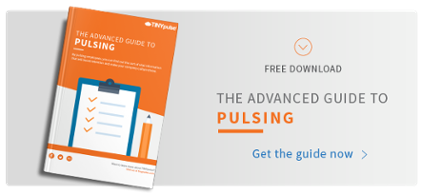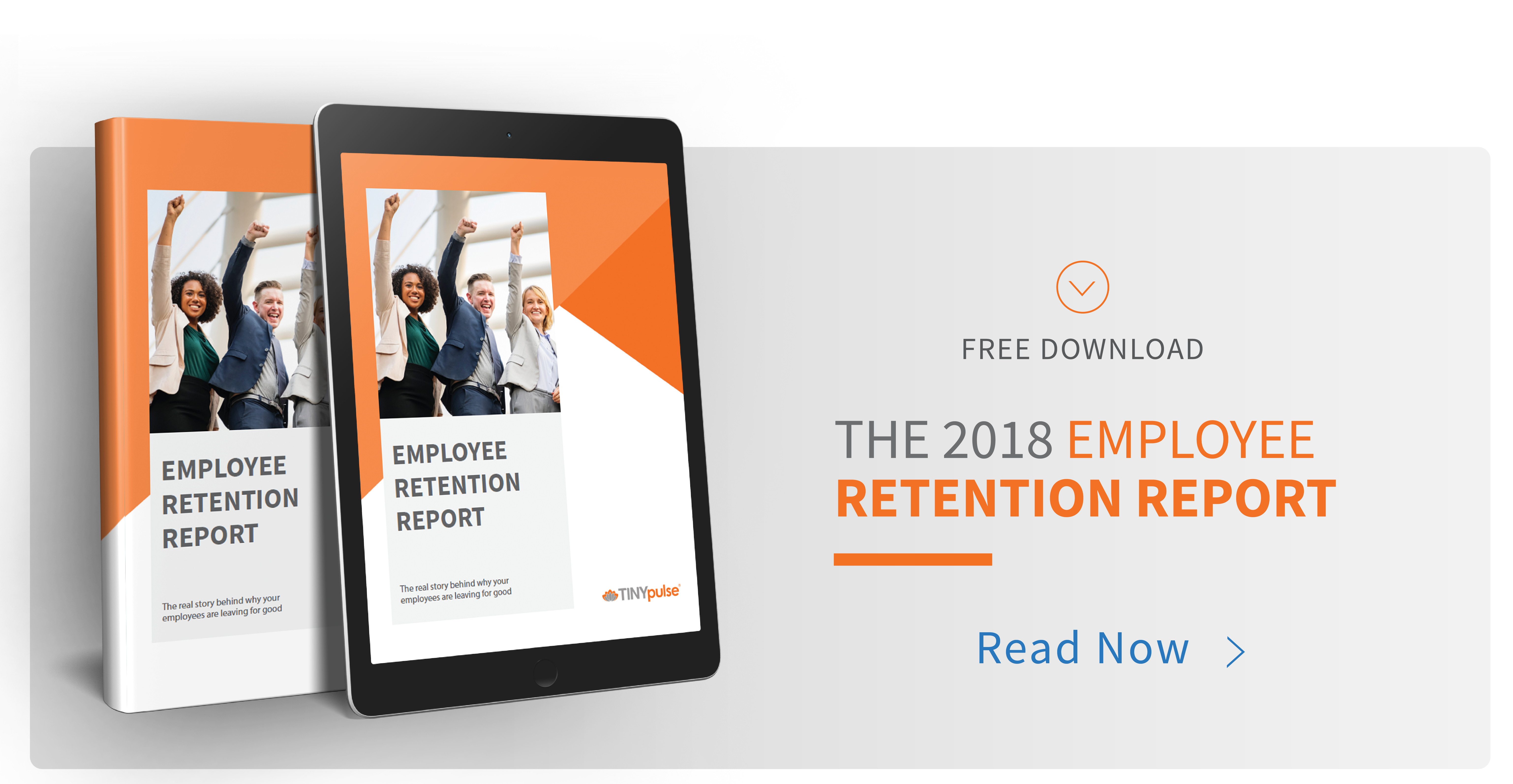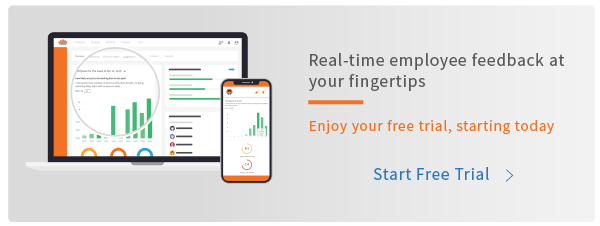How Often Should You Run Employee Surveys?
Employee surveys have traditionally been administered on a yearly basis. But that’s not what you should be doing.
Let me explain.
A Gartner study found 74 percent of organizations relied on annual employee surveys in 2019 to determine how their workers are feeling. This is down from 89 percent in 2015.
Surveys are the best tool to measure engagement and gauge employee sentiment. But many organizations are rethinking their approach.

That same Gartner report concluded what you're probably feeling.
“Formal surveys are far from extinct, but they are clearly on the decline.”
More organizations are reducing their reliance on annual employee surveys.
But that doesn’t mean they’re abandoning surveys altogether. In fact, it’s quite the opposite.
The very same Gartner report found that of organizations that aren’t using annual surveys, 64% are using pulse surveys to measure employee sentiment.
READ MORE: The Ultimate Guide to Employee Engagement Survey Questions [25 Examples to Get You Started]
Why big annual employee surveys fall short
Annual employee surveys are an essential component in any employee engagement initiative.
But they are not a panacea.
1. Annual surveys tend to be long and cumbersome
This is part of the reason why response rates often fall below 50 percent at the average organization. In large part, that’s because they take a lot of time — which employees simply don’t have to spare in one fell swoop.
2. Employee response quality stinks
People get bored and lose their interest after the first 20 minutes of filling out a survey. As a result, the data you collect isn’t always as reliable as you might hope.
We tested this conclusively in the Science Behind TINYpulse and found out that many managers are dissatisfied with annual employee surveys for various reasons, including getting data that isn’t timely, getting data that doesn’t provide enough information, and even the fact that employee surveys can take too much time to complete them.

3. Leaders are unprepared for the employee survey overload
Annual employee surveys produce a lot of information — to the point it’s hard to act on the results.
Think about it. Let's say you have 50 employees and ask 100 questions.
Someone has to go through 5,000 responses.
It might take an organization several weeks or even months to synthesize all that data.
READ NOW: HOW TO ANALYZE EMPLOYEE SURVEY RESULTS
Because annual surveys help companies collect lots of data, it's going to be difficult to take action on the feedback. That’s just the way it is.
4. The insights have a short shelf life
By the time they’re ready to share their analysis with the team, the data collected from annual surveys is already outdated.
This is one of the top managerial gripes about annual surveys: The data isn’t timely.
Nothing happens.
There’s no sense of urgency to respond to what’s collected. Employees feel disenfranchised and vow never to waste time on another survey.
READ MORE: Ask the Right Survey Questions: 50 Essential Questions for Your Employee Feedback Survey
A better way to run annual employee surveys
The PEAK assessment is the only annual survey you’ll need to monitor employee performance.
This assessment provides a 47-question survey developed by industry experts at Georgetown University to analyze individual performance, attrition, embeddedness, and core employee happiness drivers.
Years of research have concluded the following three best practices to using these surveys:
1. It doesn't have to be two-pages long
Start these surveys with the why to show their purpose and what actions will be taken after. Consider what you want to measure to come up with a list of questions you’ll ask to reach your goals.
2. Easy-to-digest employee insights
Run a deep analysis of the employee feedback to draw actionable insights. In particular, employees are motivated to take these surveys when they know you’ll act upon their feedback in a timely manner. Get the help of an expert team to help analyze the data without prolonging the process for months.
3. Maintain a regular pattern to when you send these employee surveys
Consistent cadence is key if you want to see how your employee’s feedback and beliefs evolve in time. Run a PEAK assessment every year or twice a year to monitor trends and make proper adjustments for the future of your workplace.
Using pulse surveys to get regular feedback
What is an employee pulse survey?
Pulse surveys fix all the problems of annual surveys.
While annual employee surveys are long, pulse surveys are short and contain only one question.
Pulsing is done on a much more frequent basis — like once per week or every two weeks. It measures the same metrics on a consistent basis. You can also use these brief surveys to ask your employees how happy they are at work every month and benchmark the results over time to monitor trends.
The advantages of pulse surveys
Because they are smaller and more frequent, pulse surveys help you tap into real-time insights about your employees' sentiment and morale.
Here are some of the benefits you can expect from incorporating pulse surveys into your employee feedback strategy.
1. Increased response rates
Employees don’t have to spend a couple of hours filling something out. Pulse surveys are designed to be lightweight so they don't take much time.
According to our research, the average response rate for pulse surveys is 49 percent — a significant uptick from the average response rate for annual employee surveys.

2. Solve problems faster
Because you'll be asking specific questions about how employees currently feel or what they currently think—and get specific answers—pulse surveys help them nip problems in the bud.
If an employee was upset about something in February wouldn't you want to know about it so you could act quickly? I know I would.
Annual surveys will never help you solve those festering issues — the ones that develop into truly toxic problems that hurt performance and culture
3. Increased engagement
By seeking and acting on feedback frequently, employees feel heard.
Not only are their opinions valued, they can also see their feedback being acted on quickly.
Acting on employee feedback helps employees feel a larger sense of ownership and influence over their work. They feel a sense of purpose which increases productivity and encourages them to do their best.
Getting real-time feedback through flexible surveys
Ask any questions, to anyone, at any time.
Flex surveys are not an alternative but a supplement to what pulse surveys do for your organization.
While short and frequent pulse surveys should be considered mandatory, you can add these flex surveys on top of your regular pulse cadence.
This way, you’ll be able to monitor all trends within your company while forming the habit of constantly checking in with your employees. As a result, you’re getting more options to understand your employees and uncover the quick actionable insights you need to make the best decisions.
The perfect solution to employee survey
While both types of surveys contribute to increasing employee engagement and keeping your team happy, flex surveys have their own particular advantages.
1. Complete control over your questions
Admins have more control over what questions to ask as you can only ask one question in a pulse survey. This leaves no room for misinterpretation or assuming that an answer was influenced by a previous question.
2. Receive feedback in real time
Managers will get accurate feedback as soon as it gets sent. You can send flex surveys at any time without planning in advance. That’s compared to pulse surveys, where you can only set the cadence in advance.
3. Make use of survey templates
There are several flex survey templates to choose from that will give you focus in your data analysis. For instance, you can opt for a manager's effectiveness survey, diversity and inclusion survey, COVID-19 assessment, and other options to tailor to your needs and curiosities.
4. Segment your employees
In terms of customizing who will receive these questions, flex surveys let you either segment your target audience by demographics or send the survey to specific individuals or teams. As a comparison, pulse surveys can only be sent to the whole company so you can’t find the answer to very specific questions related to a single team, project, or issue.
The bottom line: Run surveys to measure employee satisfaction regularly and act on feedback immediately
While annual surveys are a good practice, they’re very insufficient on their own.
Asking fewer questions on a continuous basis gives better and more feedback to act on — making it the better way forward.
At this point, you’re probably thinking that pulse and flex surveys sound great and all.
But you might be wondering how you’re going to find the time to launch and manage a new weekly initiative.
You’re busy enough as it is, after all, and you don’t necessarily have time to send out questions and spend however many hours analyzing the responses to figure out your next move.
You can’t rely on the survey entirely though. You need to get buy-in from your company’s leadership so they can agree with all the changes you want to make. The easiest way to get that is by using a tool that enables you to provide the necessary insights these folks need to make the changes based on real facts and in a timely manner.
One such tool is TINYpulse, which enables you to run regular employee surveys with ease.

With TINYpulse, you can ask behavioral science-backed questions that prove to deliver feedback at your cadence of choice.
Book a free demo today to find out why more than 1,000 organizations around the world rely on TINYpulse to transform their workplace — and enjoy better business outcomes because of it.
Share this
You May Also Like
These Related Stories

25 Impactful Employee Survey Question Examples
The Beginner’s Guide to Launching an Employee Survey








.png?width=534&height=632&name=blog%20ad%20(1).png)
